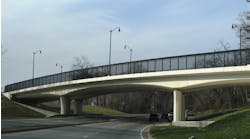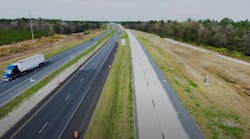Construction employment increased in 146 out of 337 metropolitan areas between August 2010 and August 2011, declined in 145 and stayed level in 46, according to a new analysis of federal employment data by the Associated General Contractors of America (AGC). Association officials noted that the local employment data remains relatively split as private-sector demand increased and public-sector activity declined more rapidly during the past year.
“The construction market is caught between increases in private-sector demand and even larger decreases in public-sector construction investments,” said Ken Simonson, AGC’s chief economist, noting that private-sector spending on construction has grown by 5.5% since July 2010, while public-sector demand declined by 8.8% during the same time period. “Construction employment continues to be stuck in a pattern where there are just as many hot spots as there are slow spots.”
Houston-Sugar Land-Baytown, Texas, added more construction jobs (10,400 jobs, 6%) than any other metro area during the past year while Lake County-Kenosha County, Ill.-Wis., added the highest percentage (22%, 2,900 jobs). Other areas adding a large number of jobs included the Chicago-Joliet-Naperville area (7,100 jobs, 5%); Warren-Troy-Farmington Hills, Mich. (3,800 jobs, 10%); Edison-New Brunswick, N.J. (3,500 jobs, 9%); and the Detroit-Dearborn-Livonia area (3,400 jobs, 18%).
The largest job losses were in the Los Angeles-Long Beach-Glendale area (-7,000 jobs, -7%); followed by Atlanta-Sandy Springs-Marietta, Ga. (-5,500 jobs, -6%); Las Vegas-Paradise, Nev. (-4,400, -10%); Philadelphia (-3,800 jobs, -6%); and New York City (-3,400 jobs, -3%). Redding, Calif. (-19%, -600 jobs) lost the highest percentage. Other areas experiencing large percentage declines in construction employment included Wilmington, N.C. (-17%, -1,600 jobs); Montgomery, Ala. (-16%, -1,100 jobs); and Panama City-Lynn Haven-Panama City Beach, Fla. (-16%, -800 jobs).
Association officials said the two most important steps Washington officials could take to boost construction employment are passing long-term infrastructure bills and reconsidering many of the costly regulatory obstacles that have been put in place. They noted that even as highway and transit legislation has languished, state and local officials are being forced to spend billions of limited transportation funds on butterfly bridges and bat-safe highway lighting.
"It’s like we are trying to rebuild our economy with two hands tied behind our back,” said AGC’s Chief Executive Officer Stephen E. Sandherr. “We’re penny-pinching on infrastructure even as we allow entitlement spending to spiral out of control, while we are doing a lot of things to inflate the cost and delay the completion of infrastructure projects.”


